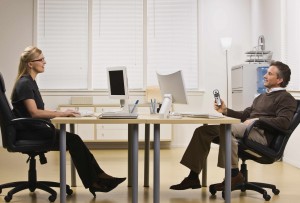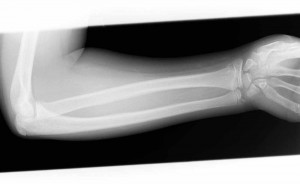-
 Minnesota
MinnesotaMayo Clinic Health Letter: Highlights from the October 2014 Issue
ROCHESTER, Minn. ― Here are highlights from the October issue of Mayo Clinic Health Letter. You may cite this publication as often as you wish. Reprinting is allowed for a fee. Mayo Clinic Health Letter attribution is required. Include the following subscription information as your editorial policies permit: Visit http://healthletter.mayoclinic.com/ or call toll-free for subscription information, 1-800-333-9037, extension 9771. Full newsletter text: Mayo Clinic Health Letter October 2014 (for journalists only).
No exaggeration: Sitting is the new smoking
The new health phrase, “Sitting is the new smoking,” is not an exaggeration, according to the October issue of Mayo Clinic Health Letter. Most people don’t smoke, but everyone sits — and most sit too long each day. Many U.S. workers sit for 15 hours a day.
In the past 15 years, a wave of research has shed new light on sitting as a serious health risk, even in those of normal weight and who routinely exercise. Thirty-four chronic conditions and illnesses have been associated with excess sitting. One recent study compared adults who spent less than two hours a day watching television with those who spent more than four hours a day doing so. After adjusting for obesity, age and other risk factors, those with higher screen time had:
- A 52 percent greater risk of dying during the study
- Over two times the risk of having a cardiovascular event, such as chest pain (angina), heart attack, heart failure and stroke
In a review of research related to sitting and cancer, each two-hour-a-day increase in sitting time was related to:
- An 8 percent increased risk of colon cancer
- A 10 percent increased risk of endometrial cancer
- A 6 percent increased risk of lung cancer
Other research has shown that too much sitting can negate many of the health benefits of moderate exercise. One study compared adults who spent less than one hour a day watching television to those who spent seven or more hours a day watching television. People who watched the most television had a 68 percent greater risk of dying during the study than those who watched the least. The risk of death decreased slightly, to 61 percent, in those who watched seven or more hours of television and exercised moderately an hour a day. Calculated another way, the study authors estimated that one hour of continuous sitting negated the benefit of 15 minutes of moderate exercise.
The studies are preliminary and need to be validated to provide a clearer view of the risks associated with sitting. But the underlying message is increasingly clear. Daily exercise is important for health but it’s also important to be mindful of sitting.
Simple treatments can help varicose veins
Varicose veins are all too common, and there is little that can be done to prevent them. They often run in families and affect women more often than men. The October issue of Mayo Clinic Health Letter offers simple lifestyle changes than can keep varicose veins from getting worse.
Veins bring the bluish-red oxygen-depleted blood back to the heart and lungs. Varicose veins, which may appear like dark twisted cords just under the surface of the skin, occur when veins lose elasticity, causing them to stretch similar to an overfull balloon. They can occur anywhere, but they most often form in the legs.
Varicose veins usually don’t cause any medical problems. Some people, though, experience aching pain and discomfort. Others may experience throbbing, cramping or mild swelling in the lower legs, especially after standing for long periods of time.
When symptoms are mild, a physician will likely recommend self-care steps to decrease the discomfort of varicose veins. They include:
Exercise: Walking is a great way to encourage blood circulation in the legs.
Healthy weight: Shedding excess pounds takes pressure off the veins.
Clothing and shoes: Low-heeled shoes work calf muscles more than high heels, which is better for veins. Tight clothing around the waist, legs or groin should be avoided. Compression stockings may help. These elastic stockings squeeze the legs and help veins and leg muscles move blood more efficiently. These stockings are effective but need to be worn from first thing in the morning until bedtime.
Leg elevation: Elevating the legs above the heart for a few short breaks during the day improves circulation.
Change positions: Moving around every 30 minutes or so encourages blood flow. It’s best to avoid long periods of either standing or sitting.
Herbal supplements: Studies show some herbal supplements containing horse chestnut could help with symptoms of varicose veins.
If varicose veins don’t respond to self-care or become bothersome, there are several options for outpatient procedures to get rid of problem veins. Insurance is more likely to cover the costs when procedures are done to address symptoms rather than for cosmetic reasons.
FRAX ― A simple tool to measure risk of bone fracture
The October issue of Mayo Clinic Health Letter provides an overview of the Fracture Risk Assessment Tool (FRAX), a simple questionnaire to estimate the risk of bone fracture over the next 10 years.
About half of the women and a quarter of the men over age 50 will break a bone due to osteoporosis. But because osteoporosis doesn’t cause obvious symptoms until a bone is broken, most people don’t know they are at risk until it is too late. When the risk is known, lifestyle changes and medications can help prevent excessive bone loss and resulting complications.
The FRAX questionnaire, available free online to anyone, takes into account age, sex, race, prior broken bones, family history of hip fracture, tobacco use, steroid medication use and medical conditions known to affect bone health. It was developed by the World Health Organization using data from several multi-thousand patient studies performed in different parts of the world.
Bone density testing, which uses low-dose X-rays to measure the mineral content of bones, remains the gold standard to assess the risk of fracture. The main goal of FRAX is to help patients and their primary care doctors decide at what point bone density testing and medical therapies can be beneficial in reducing the risk of fracture. In the U.S., experts have developed several recommendations based on FRAX results. For women age 50 and older, FRAX might be used to see if screening should be done before age 65. All women should have bone density screening by age 65.
Find the FRAX calculator here: Select Calculation Tool, the country of origin and enter personal information to calculate risk.
Mayo Clinic Health Letter is an eight-page monthly newsletter of reliable, accurate and practical information on today’s health and medical news. To subscribe, please call 1-800-333-9037 (toll-free), extension 9771, or visit http://healthletter.mayoclinic.com/.
About Mayo Clinic
Mayo Clinic is a nonprofit worldwide leader in medical care, research and education for people from all walks of life. For more information, visit www.mayoclinic.com and www.mayoclinic.org/news.
Journalists can become a member of the Mayo Clinic News Network for the latest health, science and research news and access to video, audio, text and graphic elements that can be downloaded or embedded.
MEDIA CONTACT: Brian Kilen, Mayo Clinic Public Affairs, 507-284-5005, newsbureau@mayo.edu








